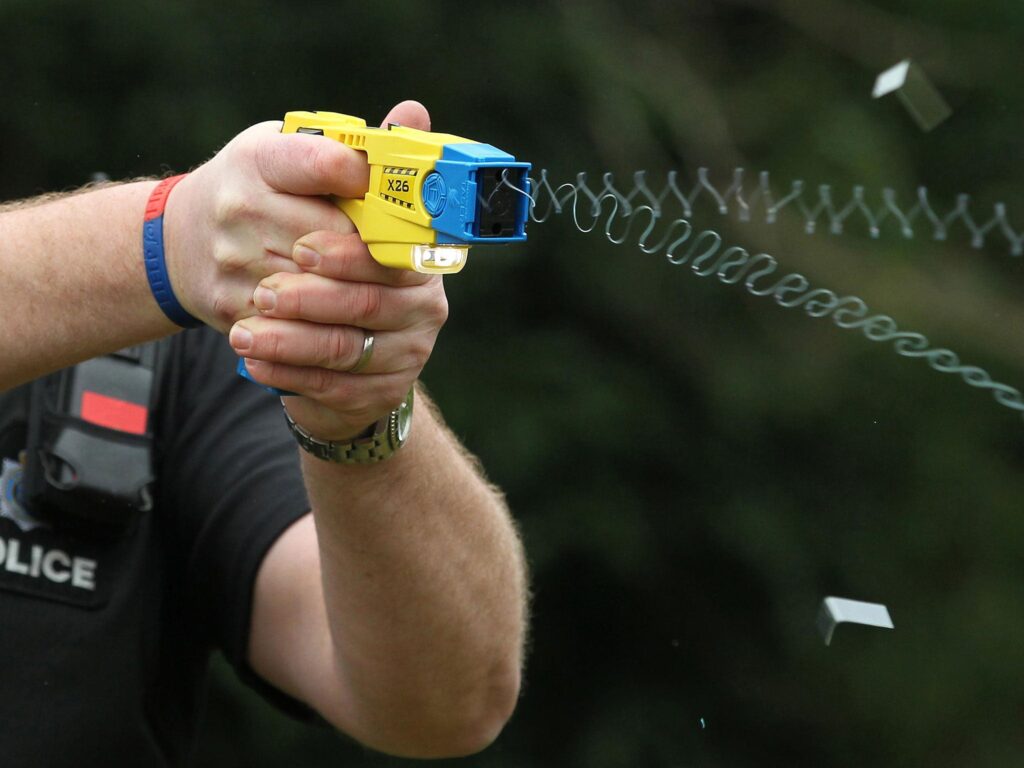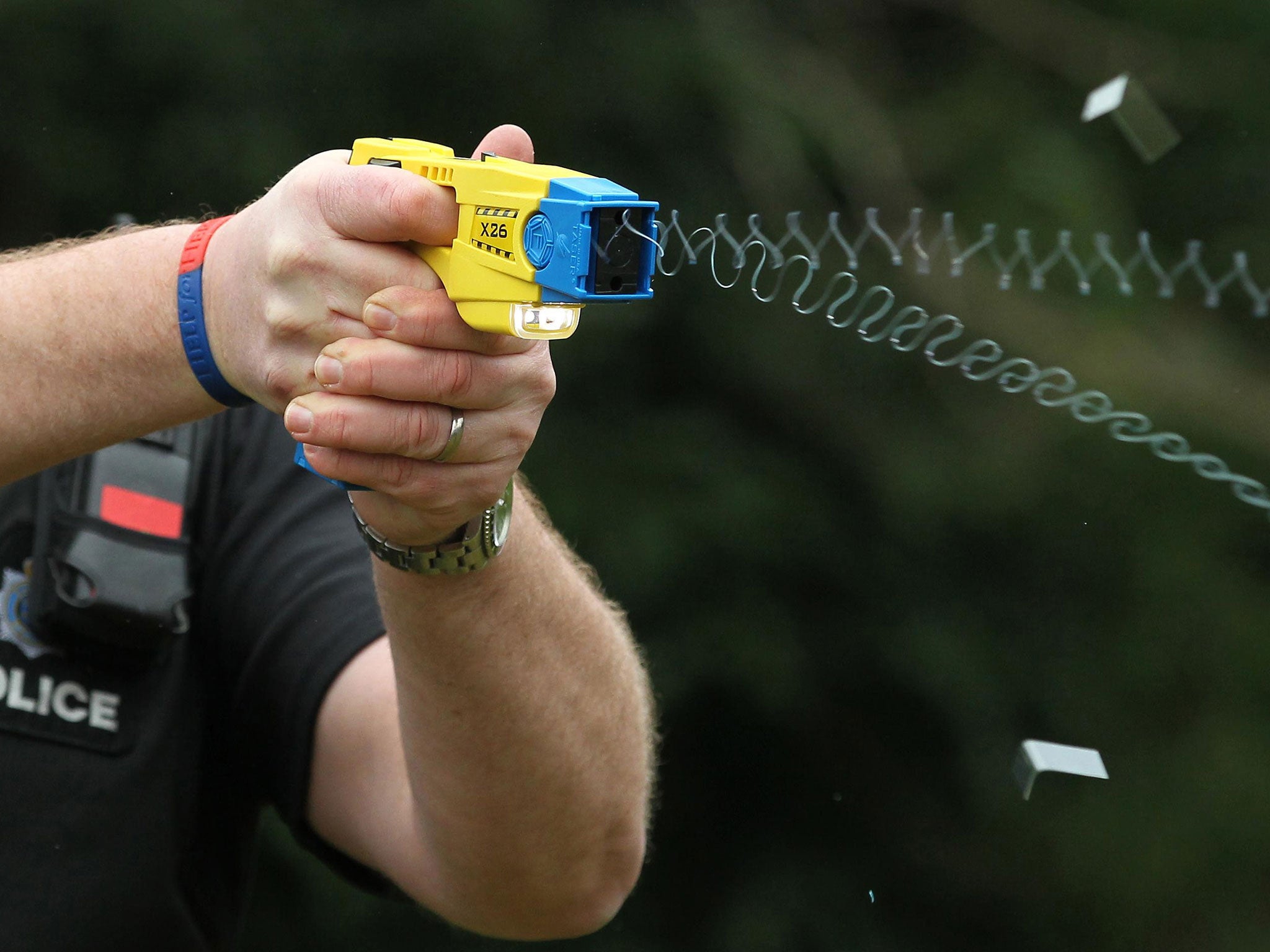
What Does a Taser Feel Like? Understanding the Effects and Risks
The question, “what does a taser feel like?” often evokes curiosity and perhaps a degree of apprehension. Tasers, also known as conducted electrical weapons (CEWs), are designed to incapacitate a person temporarily by disrupting muscle control through the use of electrical current. Understanding the sensation, effects, and associated risks is crucial for both law enforcement and the public. This article aims to provide a comprehensive overview of the experience, grounded in factual information and expert insights.
The Mechanism of a Taser
To understand what a taser feels like, it’s essential to first grasp how these devices work. A taser delivers a high-voltage, low-amperage electrical pulse that overrides the body’s nervous system. The two main types are:
- Contact Tasers: These require direct contact with the target.
- Dart-Firing Tasers: These project two small darts connected to the device by wires. Upon impact, the electrical current flows between the darts.
The electrical current causes involuntary muscle contractions, leading to what is known as neuromuscular incapacitation (NMI). This incapacitation can cause the target to lose balance and fall, rendering them temporarily unable to control their movements. The sensation experienced during this process is far from pleasant. What a taser feels like can vary, but it is universally described as intensely painful and debilitating.
Describing the Sensation: What Does a Taser Feel Like?
Accounts from individuals who have experienced a taser vary, but common themes emerge. Many describe the sensation as:
- Intense Pain: The electrical current causes muscles to contract violently, leading to sharp, localized pain at the points of contact.
- Loss of Control: The NMI effect means that the individual loses voluntary control over their muscles. This can result in falling and an inability to prevent injury.
- Overwhelming Disorientation: The sudden onset of pain and loss of control can cause significant disorientation and fear.
- Burning Sensation: Some individuals report a burning sensation at the points where the darts make contact with the skin.
One frequently asked question is, “what does a taser feel like compared to other types of pain?” Many who have experienced both describe a taser as a uniquely intense and overwhelming experience, unlike a typical muscle cramp or impact injury. The key difference lies in the involuntary muscle contractions caused by the electrical current, which are far more intense than those experienced naturally.
First-Hand Accounts
Several studies and documentaries have featured individuals voluntarily undergoing taser exposure to understand its effects. These accounts consistently describe the experience as excruciating and debilitating. For example, law enforcement trainees often undergo taser training to better understand the effects of the device on suspects. These experiences underscore the importance of using tasers judiciously.
The Effects of a Taser
The effects of a taser extend beyond the immediate sensation. They can include:
- Physical Effects: Muscle soreness, temporary loss of motor control, and potential injuries from falling.
- Psychological Effects: Fear, anxiety, and potential psychological trauma, particularly if the individual was not expecting to be tased.
- Cardiovascular Effects: While rare, there have been concerns about the potential for tasers to induce cardiac arrest, especially in individuals with pre-existing heart conditions.
The duration of these effects typically lasts for the duration of the taser application, usually around five seconds, followed by a period of recovery. However, the psychological impact can be more prolonged. Given these effects, it’s crucial to understand the circumstances under which tasers are deployed.
Risks and Safety Considerations
While tasers are generally considered safer than firearms, they are not without risk. Some potential risks include:
- Injuries from Falls: The most common risk associated with taser use is injury resulting from a fall. This can include head trauma, broken bones, and other impact-related injuries.
- Cardiac Arrest: Although rare, there have been cases where taser use has been linked to cardiac arrest, particularly in individuals with pre-existing heart conditions or those under the influence of drugs or alcohol.
- Skin Burns: The electrical current can cause minor skin burns at the points of contact.
- Psychological Trauma: The experience of being tased can be psychologically traumatic, leading to anxiety, fear, and post-traumatic stress.
Proper training and adherence to established guidelines are essential to minimize these risks. Law enforcement agencies should have clear policies regarding taser use, including guidelines on when and how they should be deployed. Understanding what a taser feels like can also inform these policies, ensuring that officers appreciate the severity of the experience and use the devices responsibly.
Minimizing Risks
Several strategies can help minimize the risks associated with taser use:
- Proper Training: Law enforcement officers should receive comprehensive training on taser use, including when and how to deploy the devices safely.
- Medical Screening: Individuals with pre-existing medical conditions, particularly heart conditions, should be identified before taser deployment, if possible.
- Avoiding Sensitive Areas: Tasers should be deployed in ways that avoid sensitive areas such as the head, neck, and chest.
- Post-Deployment Monitoring: Individuals who have been tased should be monitored for any adverse effects, such as difficulty breathing or chest pain.
The Role of Tasers in Law Enforcement
Tasers play a significant role in law enforcement as a less-lethal alternative to firearms. They allow officers to subdue individuals who pose a threat to themselves or others without resorting to deadly force. However, the use of tasers is not without controversy. Concerns have been raised about their potential for abuse and the risk of injury or death.
Understanding what a taser feels like is crucial for policymakers and law enforcement agencies. It helps inform decisions about taser policies, training, and deployment. It also promotes transparency and accountability in law enforcement practices.
Balancing Safety and Effectiveness
The challenge lies in balancing the need for effective law enforcement with the need to protect individuals from unnecessary harm. Tasers can be a valuable tool for de-escalating potentially violent situations, but they should be used judiciously and with careful consideration of the potential risks. Continuous evaluation of taser policies and training programs is essential to ensure that these devices are used safely and effectively.
Alternatives to Taser Use
Given the risks associated with taser use, it’s important to explore alternative methods for de-escalating potentially violent situations. These alternatives can include:
- Verbal De-escalation: Using calm, clear communication to diffuse tense situations.
- Physical Restraint: Employing physical techniques to restrain individuals without causing injury.
- Chemical Restraints: Using chemical agents, such as pepper spray, to incapacitate individuals.
Each of these alternatives has its own set of risks and benefits, and the appropriate approach will depend on the specific circumstances of the situation. However, exploring these alternatives can help reduce the reliance on tasers and minimize the potential for harm.
Conclusion
What does a taser feel like? It’s an experience universally described as intensely painful and debilitating, characterized by involuntary muscle contractions, loss of control, and overwhelming disorientation. While tasers offer a less-lethal alternative to firearms in law enforcement, they are not without risk. Understanding the sensation, effects, and potential risks associated with taser use is crucial for law enforcement agencies, policymakers, and the public. By promoting proper training, adhering to established guidelines, and exploring alternative methods for de-escalation, we can work to balance the need for effective law enforcement with the need to protect individuals from unnecessary harm. Ultimately, a informed understanding of what a taser feels like fosters more responsible and ethical use of these devices.
The ongoing discussion about taser deployment emphasizes the importance of continuous evaluation and refinement of policies and practices. As technology evolves, so too must our understanding of its impact and the ethical considerations surrounding its use. [See also: Police Brutality Statistics] [See also: Less Lethal Weapons Effectiveness] [See also: Taser Policy Reform]

